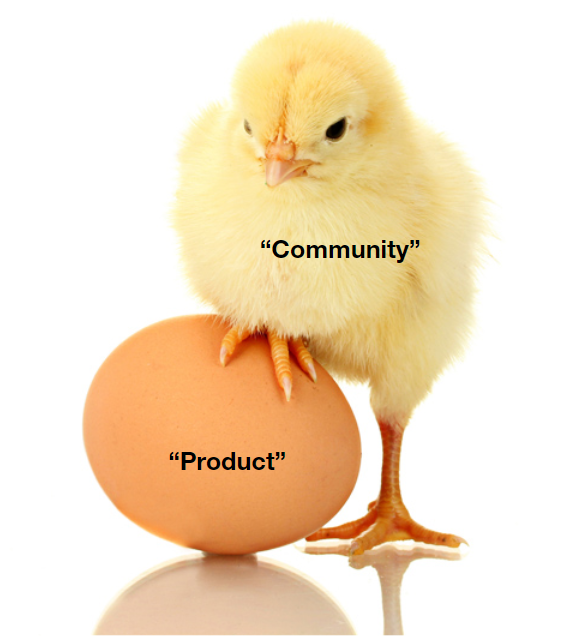What is the difference between Product DAOs and Community DAOs?
Updated 20th April 2022
Myth: You think of “progressive decentralization” as a legal strategy to stay out of prison. Maybe.
The Progressive Decentralization Playbook is a widely accepted strategy for crypto projects. But what problem does it solve? In 2020, Jesse Walden originally defined progressive decentralization as:
"a process in which founding teams relinquish control by degrees, over time... creates a path toward regulatory compliance, including issuing tokens that hopefully will not run afoul of securities regulations."
The first problem progressive decentralization solves is presumably a legal one. Uniswap and Compound are two examples applying progressive decentralization as a legal strategy. We don’t know if this works, yet. For example, Uniswap has been under investigation by the SEC, but no subpoenas have been issued. And the value of it as a legal strategy has yet to stand the test of time, perhaps, as The U.S. President’s recent announcement suggested that projects like Uniswap and Compound could present market and national security risks. Whether progressive decentralization does or does not solve a legal problem is an interesting question. But, there is another problem that isn’t really legal in nature. And that’s really about the problem of saying: What is the product here?
Myth-Buster: Progressive decentralization is a product management strategy and about MVPs.
Your typical progressive decentralization process outlined by the playbook looks like this:

At its core, it’s really a product management strategy. That is, a project’s founding team starts with some profit-generating idea and then moves from developing a Minimum Viable Product (MVP) in Step 1 to having stakeholders beyond the founding team “own”, “operate”, and “govern” the MVP or product in Step 2 and 3 through tokens.
Step 1 before Step 2 and 3 makes sense if an MVP has specified in advance what constitutes an effective KPI for a small group of people like the founding team. Typically, that KPI is profit, or revenue. For example, for Compound, the KPI was to maximize the interest paid by borrowers, and once a functioning MVP was built, the product was “decentralized” through a token distribution. For Yearn, the KPI is protocol revenue.
Yet sometimes having Step 2 and 3 before Step 1 makes sense. The typical sequence of Step 1, then 2, then 3 suggests that a product comes first and then a DAO is created to manage that product. But sometimes a DAO comes first and then one, or even multiple products with multiple founding teams emerge. In this sense, DAOs are not an outcome of product development, but a precursor to product development.
A New Myth: DAOs are about MVCs, not just MVPs.

So can we apply progressive decentralization to DAOs? We can when a product comes first and a DAO is then used to own, operate, and govern that product. These are “product DAOs”. When a DAO exists without a product to own, operate, and govern, then progressive decentralization does not seem to apply neatly. These are “community DAOs”.
To understand how to think about product development in relation to community DAOs, we need to shift our conceptual perspective from MVPs towards what we call MVCs or Minimum Viable Communities. Minimum Viable Communities are pre-product, and may produce multiple products each of which will end up building its own DAO to own, operate, and manage that specific product.
Take these examples:
- MetaCartel started as a DAO that had no clear business model or product to sell, but instead evolved from a working group on meta-transactions to a community that birthed a whole series of founding teams that wouldn’t otherwise exist, and that evolved clear products to sell, from MetaFactory to DAOHaus to Meta Gamma Delta.
While DAOhaus was a team birthed out of the MetaCartel community that then generated the DAOHaus product, the DAOHaus product itself eventually issued tokens and a DAO called UberHaus so stakeholders beyond the founding team could own, operate, and govern that product. - Axie Infinity originally started as a community of 10-15 metadata holders in early 2018. It created an environment that guided the evolution of ideas and behaviors around a new type of gaming model (“Play To Earn”) before crystallizing certain products like Axie land, Ronin Chain, and DEXs like Katana.
- 1Hive generated a community that flipped the progressive decentralization playbook on its head. The community decided to first tackle community ownership by figuring out token distribution, and then went on to vote on what to build, which ended up being a series of profit-generating products Honeyswap, Agave, and Gardens.
So what’s the takeaway? Progressive decentralization isn’t just a legal strategy, but also a product management strategy. But in the context of DAOs, progressive decentralization isn’t always helpful. It can be helpful when products come first and DAOs come second, such that stakeholders beyond the founding team own, operate, and govern a product. But sometimes DAOs come first, and many founding teams emerge from the DAO, creating and evolving different products.
These two approaches sometimes combine, like in the case of DAOHaus — a DAO generates a founding team, which generates a product, which then progressively decentralizes by creating a token and a DAO to manage that product. In this sense, community DAOs can generate product DAOs. Have product DAOs generated community DAOs? Tell us if you’ve seen this, for we’ve been looking but haven’t found any yet.
Additional Reading
- DAOs and the pitfalls of progressive decentralisation
This piece explored the Progressive Decentralization Playbook a year later in light of SushiSwap and other events which transpired. It tried to articulate that progressive decentralization was overlooking the community aspect by putting product first when it came to DAOs. - Market-Protocol Fit
This piece laid out the differences between the progressive decentralization approach startups take and the market-protocol fit for decentralized protocols. Market-protocol fit is when a broad distribution of tokens forms a community which then tries to find a product. - The Axie Community Treasury & Progressive Decentralization
A recent piece from Axie Infinity that looks back on their meteoric rise from the lens of progressive decentralization. It raises great questions about what the product is. Is it a set of aligned community members or is it some kind of technical code base with battle functions and tokenized items? Also, does the meaning of product-market fit change when you’ve launched a token with several billion dollars in market capitalization? - Progressive decentralization and what am I decentralizing?
Progressive decentralisation follows different paths depending on *what* you are decentralising.
— rafa0 (@rafathebuilder) April 15, 2022
The first question you should ask: “What am I decentralising?”
This could be either of the following individually or together:
- Governance
- Product Tech
- Craft / Work
- Community


Comments powered by Talkyard.